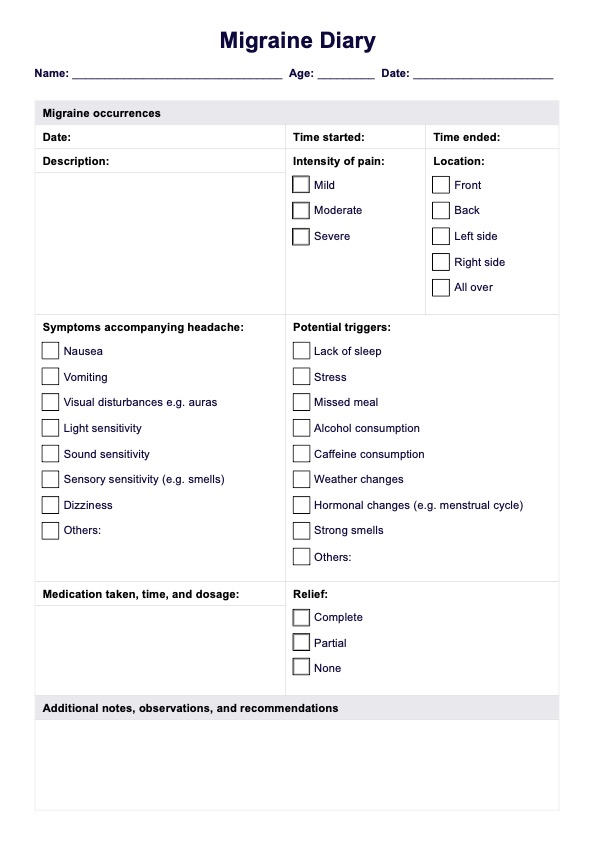The four stages of a migraine are prodrome, aura, headache, and postdrome. Not everyone experiences all stages.

Migraine Diary
Discover the benefits of using a migraine diary for effective management and treatment with a comprehensive guide and free template.
Use Template
Migraine Diary Template
Commonly asked questions
The 5 C's are Control stress, Caffeine reduction, Consistent eating habits, Consistent sleep schedule, and Chronic use of medication management.
Quick relief for migraines can include taking prescribed medication, resting in a dark, quiet room, applying cold packs, and staying hydrated.
EHR and practice management software
Get started for free
*No credit card required
Free
$0/usd
Unlimited clients
Telehealth
1GB of storage
Client portal text
Automated billing and online payments











